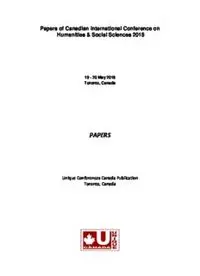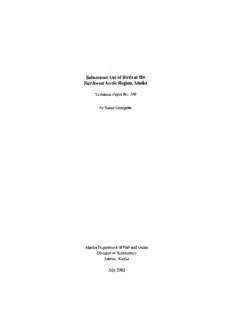
Subsistence Use of Birds in the Northwest Arctic Region, Alaska PDF
Preview Subsistence Use of Birds in the Northwest Arctic Region, Alaska
Subsistence Use of Birds in the Northwest Arctic Region, Alaska Technical Paper No. 260 by Susan Georgette Alaska Department of Fish and Game Division of Subsistence Juneau, Alaska July 2000 The Alaska Department of Fish and Game administers all programs and activities free from discrimination on the bases of race, color, national origin, age, sex, religion, marital status, pregnancy, parenthood, or disability. The department administers all programs and activities in compliance with Title VI of the Civil Rights Act of 1964, Section 504 of the Rehabilitation Act of 1973, Title II of the Americans with Disabilities Act of 1990, the Age Discrimination Act of 1975, and Title IX of the Education Amendments of 1972. If you believe you have been discriminated against in any program, activity, or facility, or if you desire further information please write to ADF&G, P.O. Box 25526, Juneau, AK 99802-5526; U.S. Fish and Wildlife Service, 4040 N. Fairfield Drive, Suite 300, Arlington, VA 22203 or O.E.O., U.S. Department of the Interior, Washington DC 20240. For information on alternative formats for this and other department publications, please contact the department ADA Coordinator at (voice) 907-465-4120, (TDD) 907-465-3646, or (FAX) 907-465-2440. ABSTRACT This report summarizes information on subsistence harvests and uses of birds and eggs in the Northwest Arctic region of Alaska, based on surveys of households and interviews with bird hunters in 11 communities. The geographic area covered by this project corresponds to the Northwest Arctic Borough, which includes the coastal regions of Kotzebue Sound, the Selawik, Noatak, and Kobuk river drainages, and the arctic coast as far north as Kivalina. The report presents information on species harvested, timing of harvests, and numbers of birds and eggs taken at the community and regional levels. Descriptive information on local knowledge of birds from interviews with hunters is summarized for selected species. The report presents the first comprehensive description of subsistence bird patterns for communities in the Northwest Arctic region. The U.S. Fish and Wildlife Service funded the project. An estimated 33,160 birds were harvested annually by households in the 11 Northwest Arctic region communities. In terms of numbers, ducks accounted for the largest percentage of the harvest (39.9 percent), followed by upland game birds (29.6 percent) and geese (29.4 percent). Sandhill cranes, tundra swans, loons, seabirds, and snowy owls each represented less than one percent of the region’s bird harvest. The most common species of migratory birds harvested in the region were Canada geese, white-fronted geese, pintails, mallards, wigeons, and black scoters. By weight, geese accounted for most of the region’s bird harvest (50.1 percent), followed by ducks (31.9 percent), upland game birds (14.3 percent), and tundra swans (2.3 percent). An estimated 14,136 eggs were harvested annually by households in the region. Seabird eggs accounted for the largest percentage of the harvest (86.5 percent), followed by goose eggs (7.1 percent) and duck eggs (5.4 percent). Murre and gull eggs were the principal species of eggs gathered. Spring was the primary harvest season for migratory birds in the Northwest Arctic region with 67.6 percent of the harvest occurring in this season. About 24.3 percent of the harvest took place in fall and 6.9 percent in summer. The communities in the region exhibited variation in harvest seasons for migratory birds. Some harvested almost solely in the spring, one almost solely in the summer, and others fairly equally in both spring and fall. An estimated total of 1,015 households in the Northwest Arctic region hunted birds during the survey year, representing 63.3 percent of all households in the region. About 1,581 persons in the region hunted birds, or about 1 out of 4 residents. Because subsistence foods were widely shared, more households used birds than harvested them. An estimated 78.5 percent of households in the Northwest Arctic region used birds for food during the survey year. TABLE OF CONTENTS List of Tables ........................................................................................................................... iv List of Figures .......................................................................................................................... V Acknowledgments ................................................................................................................... vi Introduction .............................................................................................................................. 1 Methodology ............................................................................................................................ 2 Project 1: Kiana, Selawik, and Shungnak (1994-95) ........................................................... 3 Project 2: Buckland, Kiana, Kivalina, Kobuk, and Noorvik (1997) .................................... 4 Project 3: Ambler, Deering, Kotzebue, Noatak, and Selawik (1998-99) ............................. 5 Subsistence Bird Harvests in the Northwest Arctic Region ..................................................... 5 Bird Harvests by Season .......................................................................................................... 7 Subsistence Egg Harvests in the Northwest Arctic Region ...................................................... 8 Participation in Bird Hunting .................................................................................................. .9 Bird and Egg Harvests by Species ......................................................................................... 10 Local Knowledge of Birds and Eggs ...................................................................................... 11 White-fronted Geese .......................................................................................................... 11 Canada Geese ..................................................................................................................... 11 Snow Geese ........................................................................................................................ 12 Emperor Geese ................................................................................................................... 13 Brant .................................................................................................................................. .14 Tundra Swan ...................................................................................................................... 14 Sandhill Crane .................................................................................................................... 15 Eiders .................................................................................................................................. 16 Other Ducks ....................................................................................................................... 17 Loons .................................................................................................................................. 18 Murres and Puffins ............................................................................................................. 19 Ptarmigan and Grouse ........................................................................................................ 20 .................................................................................................................................... 20 Eggs Community Reports .............................................................................................................. .22 References Cited .................................................................................................................... 23 Tables and Figures ................................................................................................................. 25 Appendix 1 ............................................................................................................................. 63 Sample Survey Instrument ................................................................................................ .65 Sample Page from Color Bird Identification Guide .......................................................... .67 Key Respondent Interview Guide ...................................................................................... 69 Appendix 2: Community Reports .......................................................................................... 71 Ambler 1998.. ..................................................................................................................... 73 Buckland 1997 .................................................................................................................... 81 Deering 1998 ...................................................................................................................... 97 Kiana 1994 ....................................................................................................................... 113 ii Kiana 1997 ....................................................................................................................... 117 Kivalina 1997 ................................................................................................................... 125 Kobuk 1997 ...................................................................................................................... 137 Kotzebue 1998.. ................................................................................................................ 145 Noatak 1998 ..................................................................................................................... 161 Noorvik 1997.. .................................................................................................................. 177 Selawik 1994 .................................................................................................................... 189 Selawik 1998.. .................................................................................................................. 193 Shungnak 1994 ................................................................................................................ .2 11 111 LIST OF TABLES Table 1. Communities and Households Surveyed, Northwest Arctic Region . .. . .. . . .. . .. . . .. . . .. .. . . .. . . .. .. . .. .. .. .. 27 Table 2. Bird Harvests by Community and Study Year, Northwest Arctic Region . . .. . . .. .. . .. . .. . .. .. .. .. . . .. . .. .. 28 Table 3. Bird Harvests by Species, Northwest Arctic Region .. . . .. . . .. . .. . . .. .. . .. . .. . . .. . . .. . . .. . .. .. . .. . .. . .. . .. . . .. . . .. .. . . 3 1 Table 4. Bird Harvests in Pounds by Community, Northwest Arctic Region . . .. . .. . .. . . . .. . . .. . .. . . .. .. .. .. .. . . .. . . .. . 35 Table 5. Per Capita Bird Harvests, Northwest Arctic Region . . . .. . . .. . .. . .. .. . .. .. .. . . . .. . .. .. .. . . .. . . .. .. . .. . .. .. .. .. .. .. . .. . . 36 Table 6. Bird Harvests Per Household, Northwest Arctic Region .. .. . .. . .. .. . . .. . .. . . . .. . . .. . . .. .. . . . .. . .. . .. . . .. .. .. . .. . .. . 37 Table 7. Bird Harvests Per Household in Pounds, Northwest Arctic Region . . .. . . .. .. .. . . .. . .. . .. .. . . .. .. .. .. . . .. . .. . . 38 Table 8. Bird Harvests by Species in Multiple Years, Kiana and Selawik .. . .. .. .. .. . .. . . . .. . . . .. .. . .. . .. . .. . . .. . . . .. .. . 39 Table 9. Bird Harvests by Season by Species, Northwest Arctic Region . . . .. .. .. ._...................................... 45 Table 10. Migratory Bird Harvests by Season by Community, Northwest Arctic Region . . . .. . .. .. .. . .. . .. . .. .. 47 Table 11. Egg Harvests by Community, Northwest Arctic Region .. . .. . . .. .. . .. . .. .. . . .. . . .. . . .. . .. . .. . .. .. . . .. .. .. . .. .. .. .. 49 Table 12. Egg Harvests by Species, Northwest Arctic Region . .. .__..........._................................................ 5 1 Table 13. Egg Harvests Per Household, Northwest Arctic Region .. .. . . .. . . . .. . .. .. .. . .. ._................................... 53 Table 14. Per Capita Egg Harvests, Northwest Arctic Region ,................................................................. 54 Table 15. Estimated Number of Persons Hunting Birds During the Study Year, Northwest Arctic Region . . .. . .. .. .. . .. .. .. . .. . .. . .. . .. . .. .. . .. . .. .. .. . .. . . .. . .. .._........................ .. . .. . . . .. . . .. .. . . . .. .. .. . . .. . .. .. .. .. .. . . 55 Table 16. Households That Used, Hunted, Harvested, Gave, or Received Birds During Survey Year, Northwest Arctic Region. .. . .. .. . .. . .. .. . . . .. .. . .. . .. .. .. .. . . . .. .. .. . . . . . . . .. . . . .. . .. .. . . .. .. . .. . .. . . .. .. . .. 56 Table 17. Percent of Households Harvesting Migratory Birds by Season, Northwest Arctic Region.. .. . .. . . . .. .. _ .. . .. . . .. .. .. . .. . .. . .. .. . . . .. .. .. . .. .. .. . .. .. . . .. .. .. . . .. .. . . .. . .. . . .. .. . . .. .. . .. . . . . . . .. . . . .. . .. .. .. .. .. . .. .. . .. .. . .. .. 57 Table 18. Bird Harvests by Species by Community, Northwest Arctic Region .. . . . .. . .. . . .. . .. . .. . .. . .. .. .. .. . .. . . .. . 58 Table 19. Egg Harvests by Species by Community, Northwest Arctic Region . . .. . . . .. . . .. .. .. .*...................... 60 iv LIST OF FIGURES Fig. 1. Subsistence Bird Harvests, Northwest Arctic Region .................................................................. .29 Fig. 2. Composition of Bird Harvests by Number, Northwest Arctic Region.. ....................................... .30 Fig. 3. Composition of Bird Harvests by Weight, Northwest Arctic Region.. ......................................... .30 Fig. 4. Composition of Migratory Bird Harvests by Number, Northwest Arctic Region.. ...................... .34 Fig. 5. Composition of Migratory Bird Harvests by Weight, Northwest Arctic Region ......................... .34 Fig. 6. Migratory Bird Harvests by Season, Northwest Arctic Region.. .................................................. .41 Fig. 7. Geese Harvests by Season, Northwest Arctic Region .................................................................. .41 Fig. 8. Duck Harvests by Season, Northwest Arctic Region .................................................................... 41 Fig. 9. Crane Harvests by Season, Northwest Arctic Region ................................................................... 42 Fig. 10. Swan Harvests by Season, Northwest Arctic Region.. ................................................................. 42 Fig. 11. Seabird and Loon Harvests by Season, Northwest Arctic Region.. ............................................. .42 Fig. 12. Upland Game Bird and Owl Harvests by Season, Northwest Arctic Region.. ............................ .42 Fig. 13. Migratory Bird Harvests by Season by Community, Northwest Arctic Region.. ........................ .43 Fig. 14. Subsistence Egg Harvests, Northwest Arctic Region.. ................................................................ .50 Fig. 15. Composition of Egg Harvests, Northwest Arctic Region ............................................................. 50 ACKNOWLEDGMENTS This study was truly a cooperative effort with Maniilaq Association, an Alaska Native non- profit organization in the Northwest Arctic region. Maniilaq staff Enoch Shiedt and Art Ivanoff participated at varying times in the fieldwork, sharing their guidance, insight, and good humor. In addition, they assisted in numerous project details and data reviews. Chester Ballot of Maniilaq Association provided unflagging support for the project. The support of the tribal councils in the 11 communities in the Northwest Arctic region was equally critical to the project’s success. Heartfelt thanks are owed to the many elders and hunters who welcomed us into their homes and shared their knowledge about birds and to the several hundred households who volunteered information about their subsistence bird harvests. We are indebted to the locally hired research assistants who carried out their survey work with care and diligence: Christina Cleveland, Ambler Muriel Ross, Buckland Brenda Moto, Deering Elmer Jackson, Kiana Ted Smith, Kiana Nora Swan, Kivalina Ethel Wood, Sr., Kobuk Betty Nelson, Kotzebue Nate Shiedt, Kotzebue Hilda Arey, Noatak Lulu Good, Noorvik Vemita Ballot, Selawik Tracy Sampson, Selawik Wynona Jones, Shungnak The project was initiated by Cynthia Wentworth of the U.S. Fish and Wildlife Service, who provided vision, financial support, and an unfailing confidence in our abilities. Division of Subsistence staff in the Alaska Department of Fish and Game also contributed to the project in important ways. Dave Andersen and Amy Paige conducted the earliest round of bird surveys and interviews. The Subsistence Data Program staff, including Charles Utermohle, Cheryl Scott, Louis Brown, Gretchen Jennings, and Jessie Mallery, entered and analyzed the data, responding good-naturedly to our questions and suggestions. Robert Wolfe, Elizabeth Andrews, and Polly Wheeler offered perceptive advice and review at various points along the way. To all, we are grateful. INTRODUCTION This report summarizes information on subsistence harvests and uses of birds and eggs in the Northwest Arctic region of Alaska, based on surveys of households and interviews with bird hunters in 11 communities. The geographic area covered by this project corresponds to the Northwest Arctic Borough, which includes the coastal regions of Kotzebue Sound, the Selawik, Noatak, and Kobuk river drainages, and the arctic coast as far north as Kivalina. This report presents information on species harvested, timing of harvests, and numbers of birds and eggs taken at the community and regional levels. Descriptive information on local knowledge of birds from interviews with hunters is presented for selected species. Comparable harvest information for the adjacent Norton Sound and Bering Strait region is available in Paige, Scott, Andersen, Georgette, and Wolfe (1996). Migratory birds are important to the culture, life, and economy of the Northwest Arctic region. The Iiiupiat of northwest Alaska hunt geese, ducks, and other birds each year as part of their annual cycle of subsistence activities. These are long-standing traditions stretching back generations. Little information has been collected in recent years quantifying the number of birds and eggs harvested by species and describing local ecological knowledge of birds. Existing sources of information on subsistence uses of birds include Anderson, Anderson, Bane, Nelson, and Towarak (1998) on the upper Kobuk River in the mid-1970s Uhl and Uhl(1977) on the Cape Krusenstem area, Uhl and Uhl (1979) and Foote and Williamson (1966) on Noatak, and Burch (1985) and Saario and Kessel (1966) on Kivalina. Subsistence bird harvests in the Northwest Arctic region were estimated in the early 1970s by Patterson (1974) and in the early 1980s by Minn (1982, 1983). Information on the subsistence harvest of brant, emperor geese, and eiders throughout Alaska in the late 1980s and early 1990s is available in Wolfe and Paige (1995). This current project was an effort to provide a more complete picture of subsistence bird uses in the Northwest Arctic region in the 1990s. From 1994-99, the Division of Subsistence, Alaska Department of Fish and Game worked with the regional non-profit Alaska Native association and community tribal councils to document the subsistence harvest of migratory birds in Kotzebue Sound. This was part of a larger effort-initiated and funded by the U.S. ‘Fish and Wildlife Service-to document subsistence harvests of migratory birds throughout northern and western Alaska. The impetus for this research was a developing agreement between the United States and Canada to amend the Migratory Bird Treaty of 1916 to allow a legal spring subsistence hunt for waterfowl in rural Alaska. Information on subsistence uses of migratory birds was needed in the effort to amend the 1 treaty. The amended treaty was ratified in October 1997. The next step-implementation of regulations consistent with customary and traditional uses- also required subsistence use information. Data on bird harvests were also valuable for assessing the contribution of the subsistence harvest to the total annual waterfowl take, helping make continental management more accurate. Of additional interest to the U.S. Fish and Wildlife Service (USFWS) in this research was the subsistence uses of the following bird species in Alaska: emperor geese, brant, and eider (common, king, spectacled, and Steller’s). At the time, the USFWS was concerned about declining populations of emperor geese and brant, two species included in the Yukon Delta Goose Management Plan, and needed subsistence information for management planning, population modeling, and population recovery programs. Subsistence information was also needed for spectacled and Steller’s eiders, whose apparent population declines led the USFWS to designate them as threatened in 1993 (spectacled) and in 1997 (Steller’s). Common and king eider showed no apparent population declines. Information on eider ecology in Alaska and on reasons for the population changes was incomplete. The knowledge of Native peoples about eiders and other birds provided an important contribution to the scientific record. This project also provided an opportunity for local residents in the Northwest Arctic region to participate in collecting and recording subsistence use information. The project demonstrated a model of cooperative research between Native organizations and state and federal agencies that could be used again in the future. METHODOLOGY Information on the subsistence take of birds was collected using household surveys in all 11 communities in the Northwest Arctic Borough. In 1998 these communities ranged in population size from 102 in Kobuk to 2,964 in Kotzebue (Alaska Department-of Labor 1999). Surveys were conducted during three separate projects between 1994 and 1998. All communities were surveyed at least once since 1996, except Shungnak which was surveyed in 1994. Two communities, Kiana and Selawik, were surveyed twice, first in 1994 and again in 1996 or 1997 to update the data. Table 1 lists the surveyed communities, the year(s) in which the survey(s) took place, and the number of households surveyed. Each of the three survey projects is described in greater detail below. Including each community’s most recent survey year, 529 of 1,596 households in the region, or 33.1 percent of ail households, were surveyed about their subsistence harvest of birds. With 2
Description:The list of books you might like

The Spanish Love Deception

Rich Dad Poor Dad

Mind Management, Not Time Management

Believe Me

West Knits Book Three
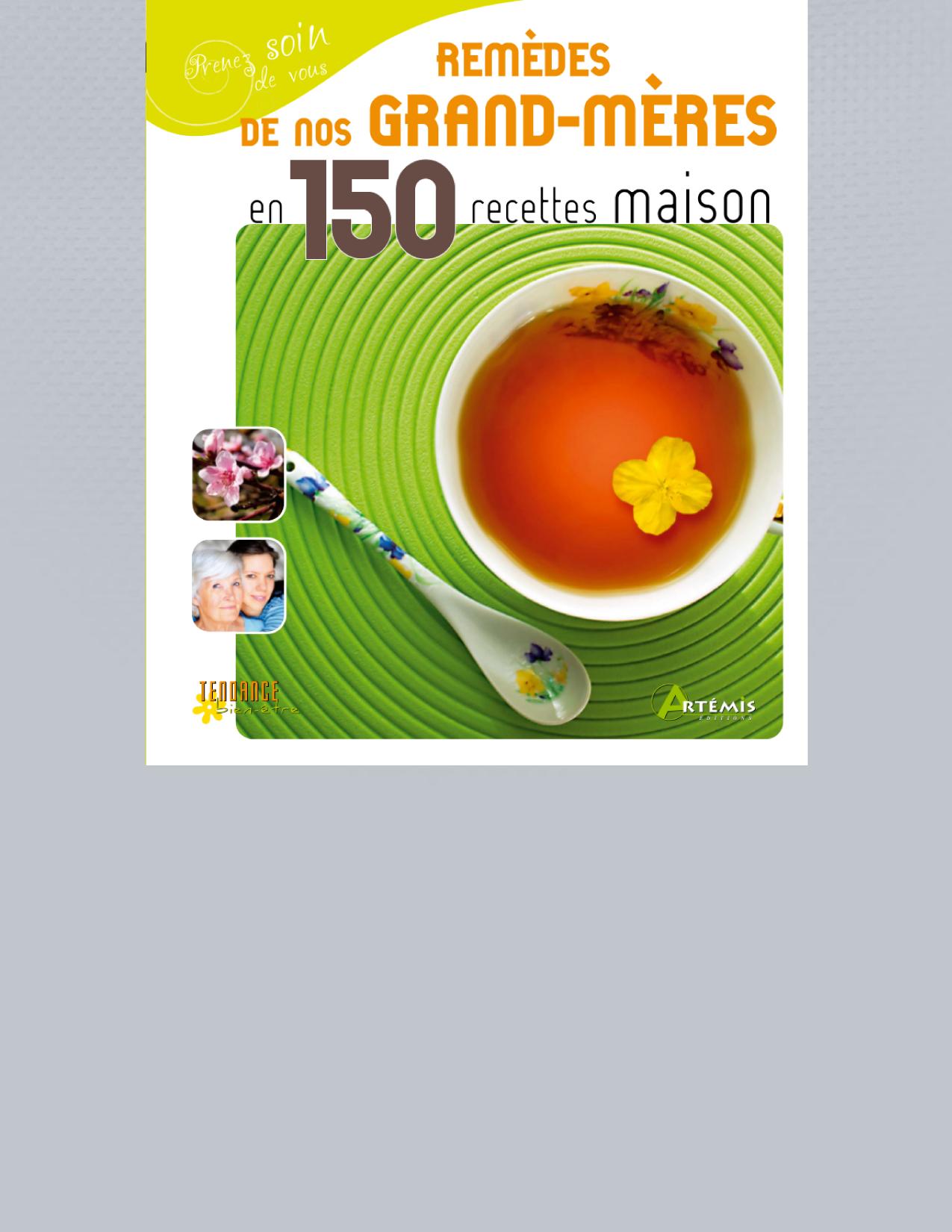
Remèdes de nos grand-mères en 150 recettes maison
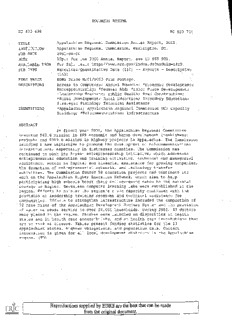
Appalachian Regional Commission

Attitudes, Personality and Behavior (2nd Edition)
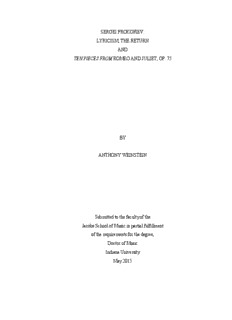
BY ANTHONY WEINSTEIN

Greek Government Gazette: Part 2, 2006 no. 518
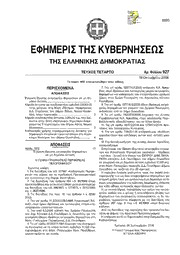
Greek Government Gazette: Part 4, 2006 no. 927

Steve Jobs

云原生服务网格Istio:原理、实践、架构与源码解析(elib.cc)

Greek Government Gazette: Part 2, 2006 no. 1893
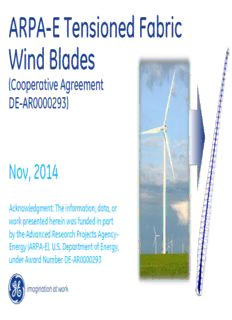
ARPA-E Tensioned Fabric Wind Blades
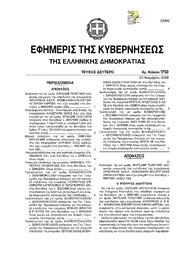
Greek Government Gazette: Part 2, 2006 no. 1750
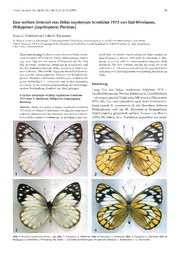
Eine weitere Unterart von Delias nuydaorum Schröder 1975 von Süd-Mindanao, Philippinen (Lepidoptera: Pieridae)

ERIC ED510540: Benefits of a High School Core Curriculum
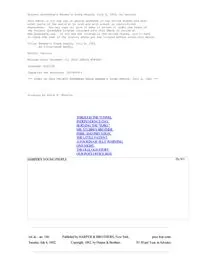
Harpers Young People July 4 1882 by Various




